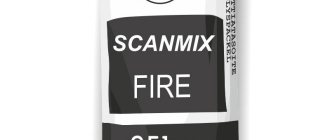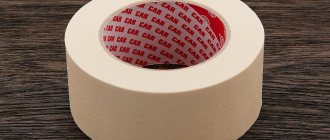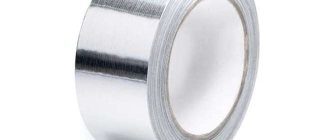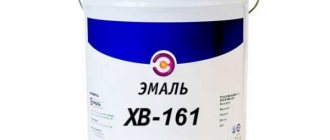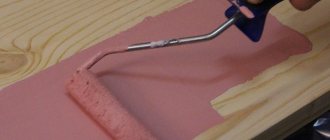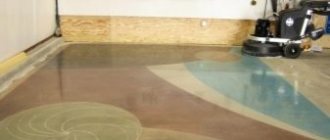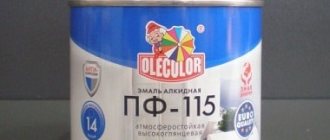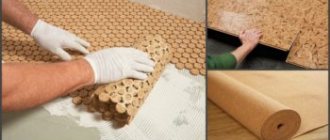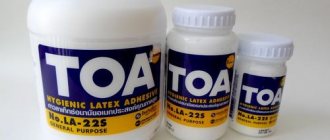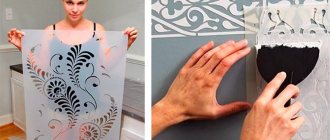Heat resistant tape – this is an insulating (finishing) material capable of withstanding thermal effects for a long time, high-temperature heating, up to 400 degrees Celsius.
At the same time, the base material, both combustible and non-combustible, is resistant to temperature deformation and does not lose its integrity or strength; and the adhesive one-sided or double-sided coating does not lose the ability to reliably fix on the protected surface.
Heat-resistant foil and Kapton tape
Scope of application of adhesive tape
Aluminum adhesive tape is an expensive material, so it is used in cases of justifiable need. It is a foil with an adhesive composition applied on one side. The adhesive contains heat-resistant properties and can withstand temperatures up to 350 degrees. The foil is water- and airtight.
Such abilities allow the tape to be used when installing ventilation systems, air conditioning, etc. When sealing and connecting pipes.
Application is widespread on surfaces that are subject to the spread of corrosion. To protect them from moisture and contamination.
The use of aluminum tape for reflective insulation has become widespread (it significantly reduces the total heat loss, as it has a high reflective ability):
- The systems have heated floors (water, electric).
- Screens behind radiators that prevent heat from penetrating the walls, leaving it in the room.
- Insulation of trucks with refrigeration equipment for transporting food, etc.
To ensure high heat transfer in the production of household appliances, heat-conducting tape is used. It connects the copper pipes in the cooling system to the radiator panel.
Foil polyethylene foam ↑
- These materials are made on the basis of polyethylene foam using a special technology. The height of the insulation layer can be very different, ranging from very thin 2 mm to relatively thick 15 mm. As a rule, this is rolled foil thermal insulation. Thicker materials can be supplied in sheets of standard size. The thickness of the foil layer is 10÷15 microns. The technical and operational characteristics of the insulation also depend on the type of source material:
- Inexpensive brands are made from ordinary polyethylene, subjected to multiple foaming processes. The result is a closed porous gas-filled structure of the new material. These insulation materials have a significant drawback - they are prone to gradual shrinkage due to their low resistance to mechanical loads. “Cross-linked” polyethylene (as insulation based on PPE is called) has the best strength indicators. Cross-links at the molecular level provide resistance to mechanical stress.
Their density is slightly higher. Moreover, when the dynamic impact stops, the material “tries” to restore its original shape.
- The construction market offers a wide range of thermal insulation materials based on foamed polyethylene. Among them, the most popular are foil Penofol, Izolon, Folgoizol and others.
- The insulation sheets are laid end-to-end and fixed to the surface, for example, using a construction stapler. In principle, you can use any other method. The main thing is that in this case the integrity of the foil is not greatly damaged. Then the joining seams are taped with foil tape.
Areas of use ↑
- It is used as an additional or main thermal insulation layer when installing a floor, which also acts as a waterproofing layer. When laying, the foil part should face upward, towards the finishing coating.
- It copes well with thermal insulation of walls, as well as ceilings in rooms whose dimensions do not allow the use of thicker insulation, for example, on a narrow balcony (loggia). Fasten the material with a foil surface inside the room. It is used for insulation of roof slopes both as an independent material and as an addition to others. In both cases, it is fixed with a reflective surface inside the attic room and a sheathing is placed on it under the sheathing. With its help, they equip the thermal insulation of the bath. Simultaneously with the insulation of the bathhouse from the inside (ceiling, walls), the issue of vapor and waterproofing is also being resolved - protecting the casing from waterlogging. For critically high temperatures, such as, say, in a steam room, such material is not very suitable, since it is operated in a limited temperature range.
Features of use
The use of such a strip has its own characteristics:
- The surface on which the tape is to be applied must be thoroughly cleaned of dirt and dust deposits. Dryness and uniformity are also ensured.
Even the presence of a small amount of dust will lead to poor adhesion.
- Be sure to maintain even application. After covering with raw materials, everyone should run their hand along the surface and seams to ensure that there is no airing.
- The strip is applied tightly and left for a while to increase adhesion.
- The base must not be used twice. The second application will be of poor quality; the tape will not provide the required properties.
- When applying, be careful not to let your fingers touch the adhesive side.
- In rooms with high humidity, the strip should not be used. It is more correct to use other materials whose properties are not affected by humidity.
Krepp
Krepp (painting tape) - adhesive tape for temporary gluing to a surface. The base is most often paper, but quite durable. It is waterproof and you can write on it. The adhesive layer has moderate adhesion, it sticks well to any substrate, holds quite securely, but is easily removed and does not leave marks.
Masking tape is used when performing finishing work - when painting, priming, and decorative surface treatment. The tape covers areas that should not be exposed to paint, primer, impregnation, etc. It can also be used as packaging material - for temporary sealing of light containers.
Types of tape
Each manufacturer uses its own specific composition to produce aluminum tape. It also depends on the area of use to which production is directed. The following types are distinguished:
- Aluminum foil tape. A common type that is found in all construction rows. Characteristics: unaffected by solar radiation, high insulating properties. Scope of application: at home when sealing small joints and seams.
- Reinforced tape. It has professional applications: sealing ventilation, pipeline and other systems. Provides protection for equipment, machinery, and machines from contamination.
- With polypropylene base and fabric fibers. A strong material with quality characteristics: wear resistance, tensile strength. When working, precision and quality of application are required.
Foiled from polystyrene foam ↑
This is a durable thermoplastic obtained by fusing polystyrene granules with aluminum foil on one side. This is a strong material that is resistant to significant mechanical stress and high humidity. It does not rot and is biologically stable. Retains its characteristics in the temperature range from -180˚ to 180˚.
The material is often used when laying heated floors. To facilitate this process, markings are applied to the slabs at the factory. When laying insulation, a layer of foil reflects the heat flow upward, warming up the finish coating.
Contact Information
Share:
Description
Attention! Important information! constantly conducts promotions in the regions , offering to purchase equipment at a special introductory price. When placing an order, do not forget to check with the manager filling out your application whether the Promotion in your region and answer his questions in as much detail as possible. This can significantly save your money. Thank you for your interest in our equipment.
Which manufacturers should you pay attention to?
Aluminum tape is produced by Russian and foreign companies. Products from the following manufacturers are actively used:
- Aluminum reinforced adhesive tape Izolon Alu. It has the following properties: thermal insulation, does not allow steam and moisture to pass through, is thermo-frost-resistant, is not affected by solar radiation, does not contain harmful impurities, resists the spread of rust, and is chemically resistant. Used for insulating ventilation systems, heat supply systems, sealing pipes at joints, etc.
- Intertool is a heat-resistant aluminum tape. It consists of a strip of pure aluminum, an adhesive layer of synthetic rubber, and a paper backing. It is resistant to solar radiation and atmospheric influences. Moisture and temperature resistant. Operating temperature up to 120 degrees.
- Aviora is an adhesive tape designed for sealing seams and joints when installing ventilation and air duct systems, and roofing structures. Moisture-heat-resistant material that resists ultraviolet radiation. Adhesion to wood, metal, polymer surfaces.
- Folsen – high quality aluminum tapes made in Europe. The company produces the following types of material: standard, reinforced, heat-resistant.
- FIT - produces frost-resistant, heat-resistant tapes that are used for insulation work, gluing metal parts, and creating ventilation ducts.
Products from Raychem and Unibob . They produce products used for installation work, insulation and other work.
Composition and characteristics
In the industrial production of heat-resistant self-adhesive tapes, low-flammability polymers, metal foil, and non-flammable fabric materials made from mineral raw materials are used as a base:
- Aluminum, rarely copper, brass foil.
- Kapton, Teflon, other synthetic polymer compounds.
- Fiberglass, siliceous, basalt, including foil, reinforced with metal mesh, fabric tapes.
- Electrical insulating paper, which is made from sulfate cellulose with the addition of synthetic fibers, has high electrical resistance and heat resistance.
- Metallized heat-resistant paper, coated with metal powder or glued with aluminum foil.
It is the use of such high-temperature resistant materials, including those that reflect heat, as a tape base that explains the heat resistance of this type of tape.
The following is used as a single-sided or double-sided adhesive layer for some types of heat-resistant tape:
- Silicone glue.
- Synthetic rubber adhesive.
Both adhesive compositions ensure reliable fastening of the heat-resistant tape on protected surfaces of different textures and materials of manufacture due to high initial stickiness and adhesion; and also ensure long-term operation due to moisture resistance, resistance to pyrolysis, corrosion, and shear strength.
Main characteristics of heat-resistant tapes:
- Long-term performance under the influence of high temperature of the protected surface.
- High adhesion of the adhesive layer.
- Strength, wear resistance.
- No toxic emissions when heated.
- Moisture resistance, resistance to aggressive chemical environments.
What to look for when choosing a product
When choosing a product, you should focus on length and width.
The length of the skein ranges from 10 to 50 meters. For work carried out in home repairs, you should purchase no more than 20 meters of material. For regular, professional work, it is worth purchasing the maximum length of the product.
The width depends on the type of work performed. If aluminum tape is used to insulate pipes, then you should not buy a strip wider than 60 mm. When gluing thermal insulation materials, the width should be more than 75 mm.
Also, do not confuse aluminum and metallized tape. Their areas of application are similar, but the second material differs in maximum temperature of use by no more than 80 degrees.
Foil mineral wool ↑
Mineral wool itself already has very high thermal insulation characteristics. Foil, firstly, further increases the efficiency of insulation, and secondly, it is an additional way to protect hygroscopic material from the penetration of excess moisture and steam, which could have an extremely negative impact on its performance.
The material is sold in the form of compressed rolls, sectional or individual slabs, cylinders and half-cylinders.
Application ↑
- When thermally insulating the roof, the material is placed in the space between the rafters tightly enough to prevent the formation of cold bridges. The density of the foil, as a rule, is sufficient to allow fastening to the brackets using the reflective layer. The joints must be taped with foil tape. This will help ensure a water vapor barrier effect.
- The maximum operating temperature of this material is more than 300˚, so it is more suitable than any other for insulating a bathhouse. Some experts even consider this to be its main purpose. Insulating boards or mats are placed between guides laid in increments that are smaller than the width of the thermal insulation. It is mandatory to have an air gap of 20–25 mm, which is left between the thermal insulation layer and the cladding of the walls and ceiling. The heat resistance of mineral wool with foil makes it possible to use it for additional insulation of boilers, boilers and other similar devices. Collapsible cylindrical or semi-cylindrical thermal insulation materials made of foiled mineral wool are suitable for insulating pipelines.
